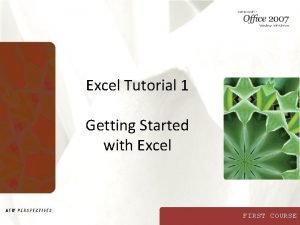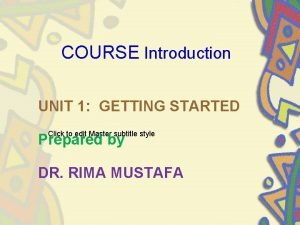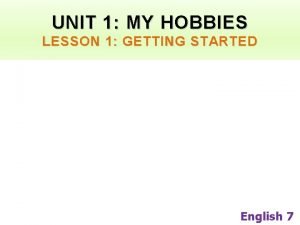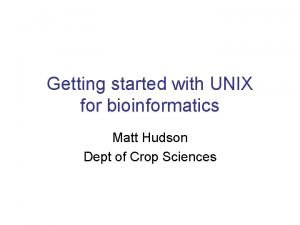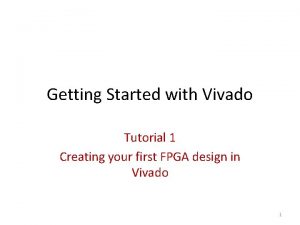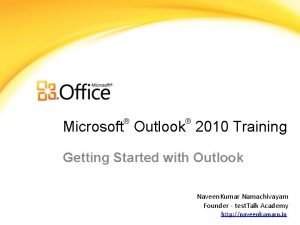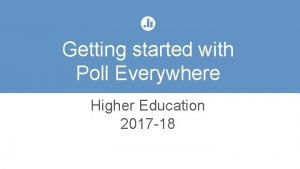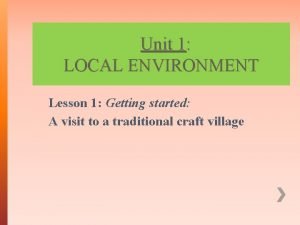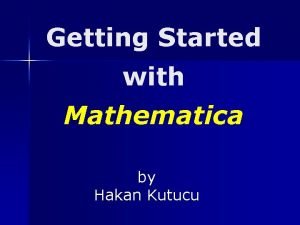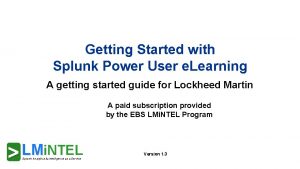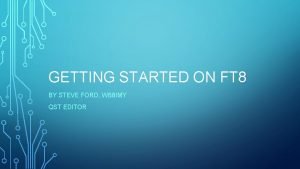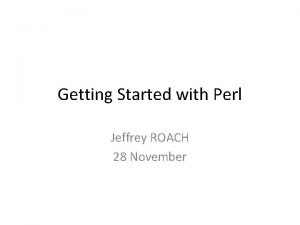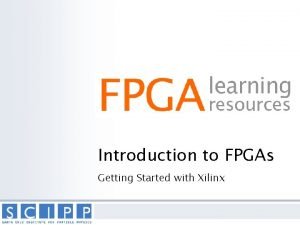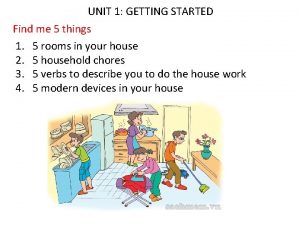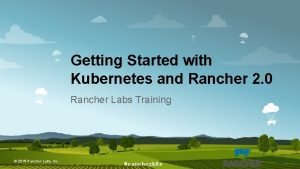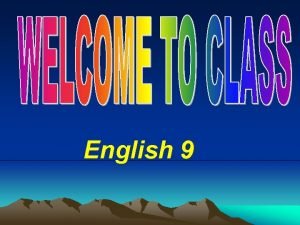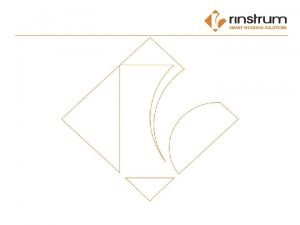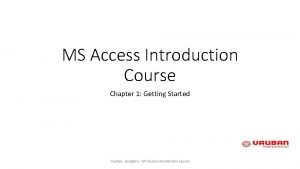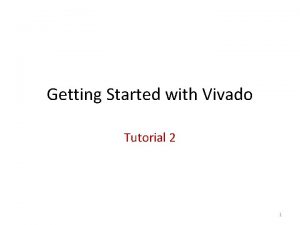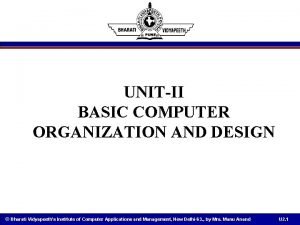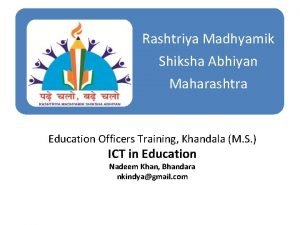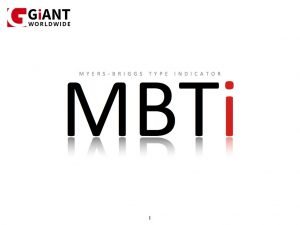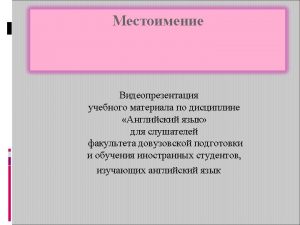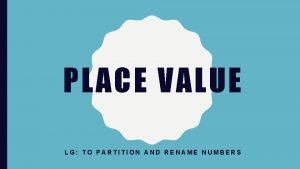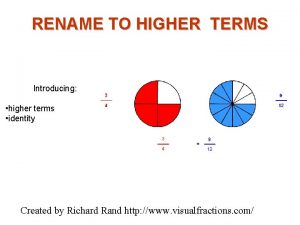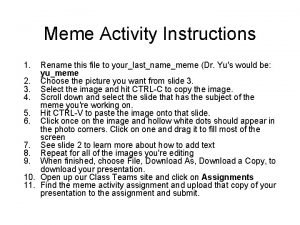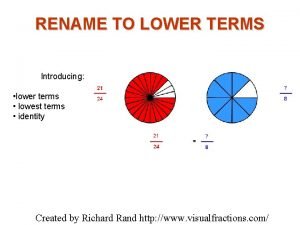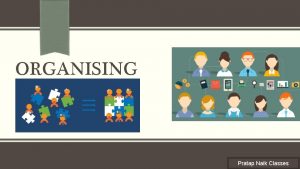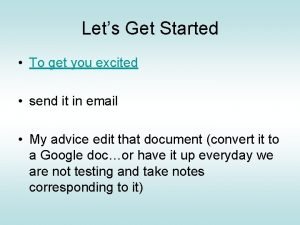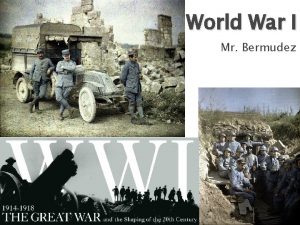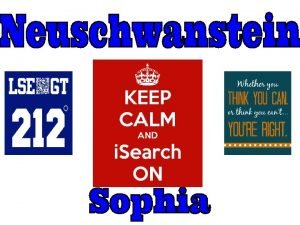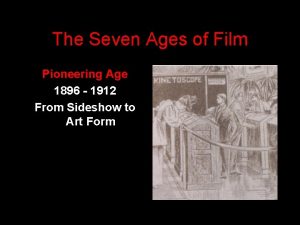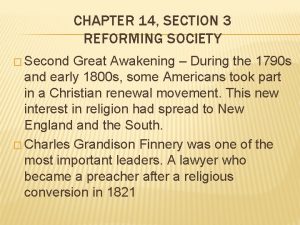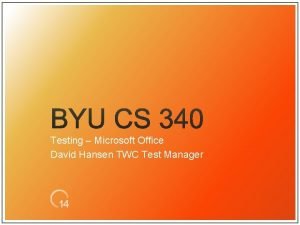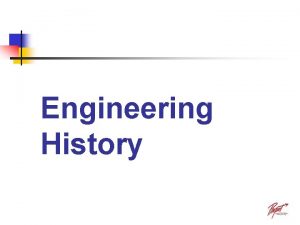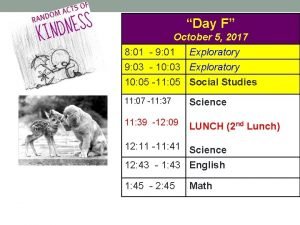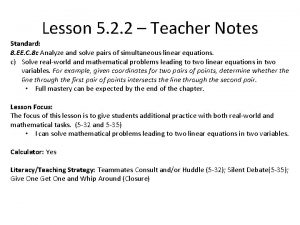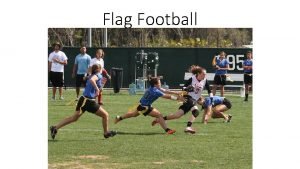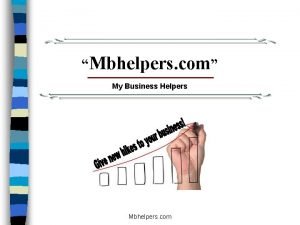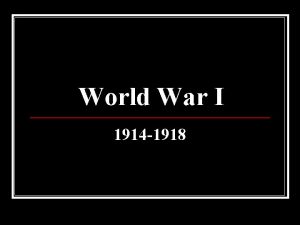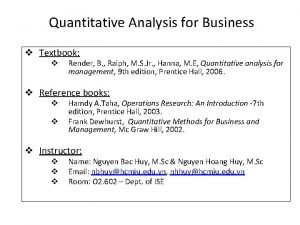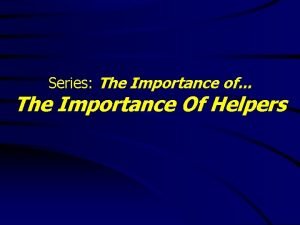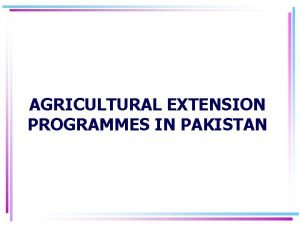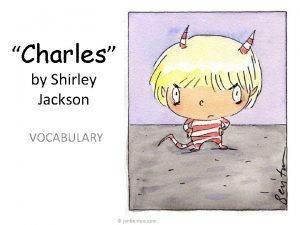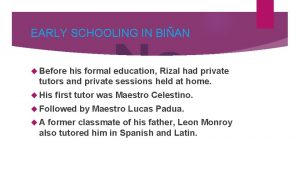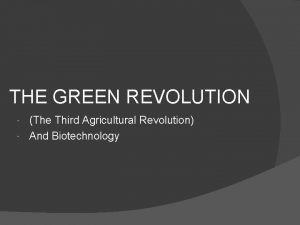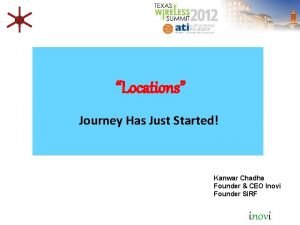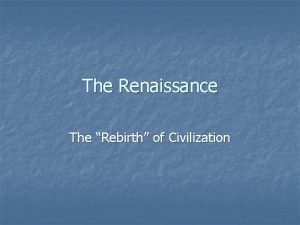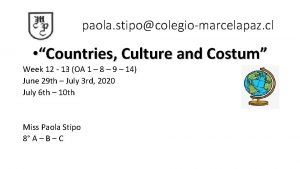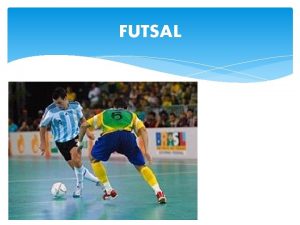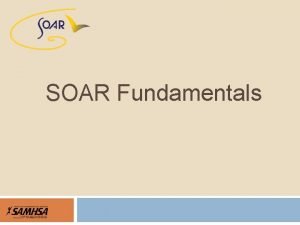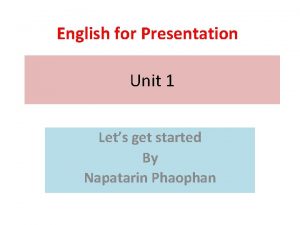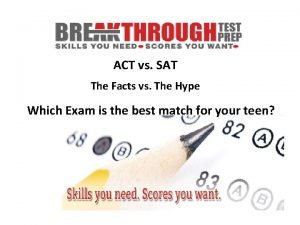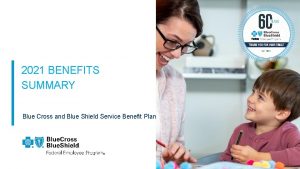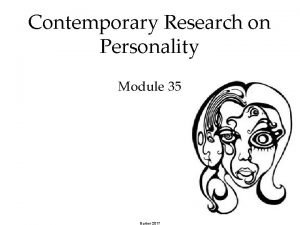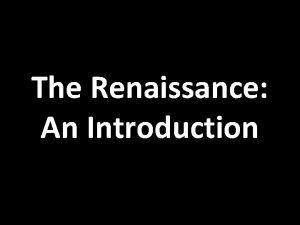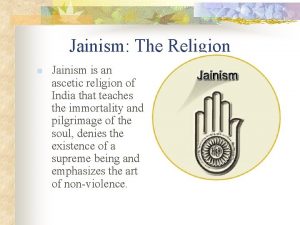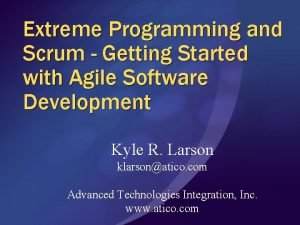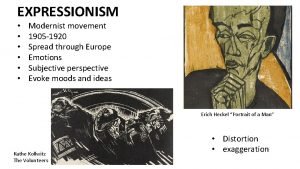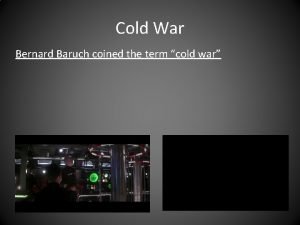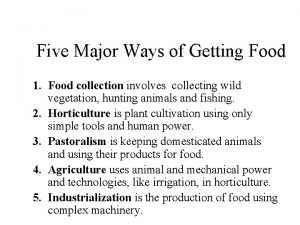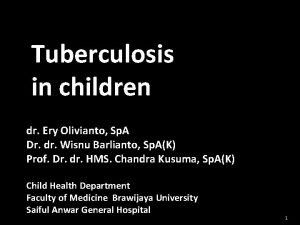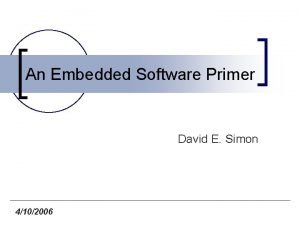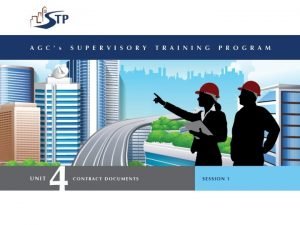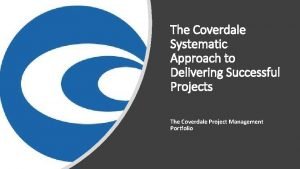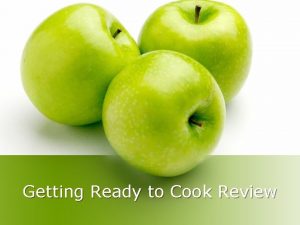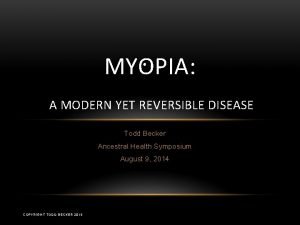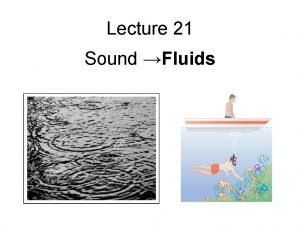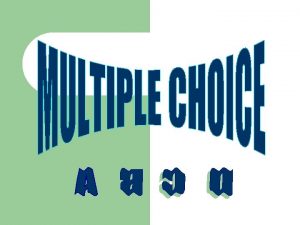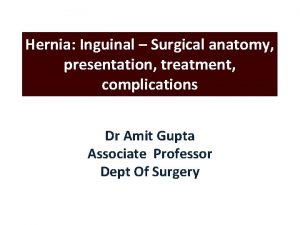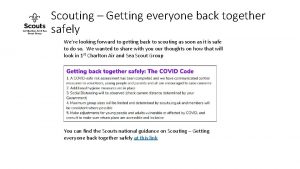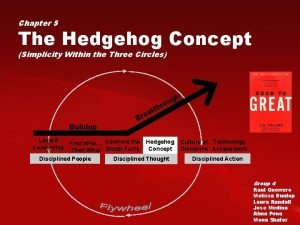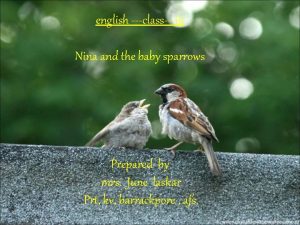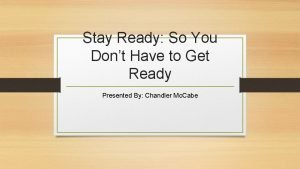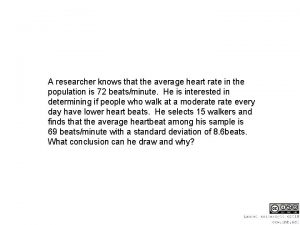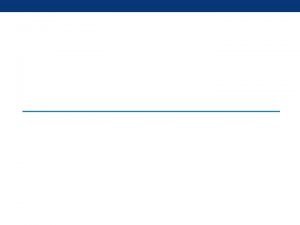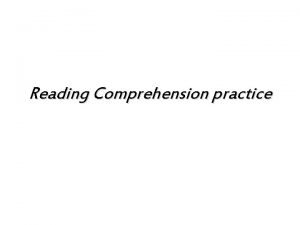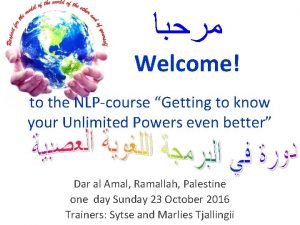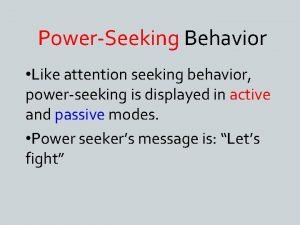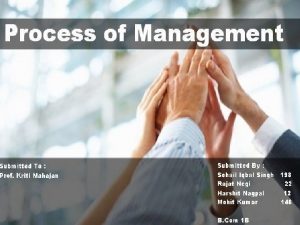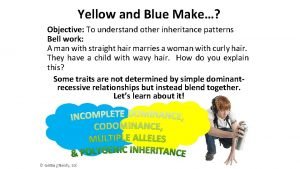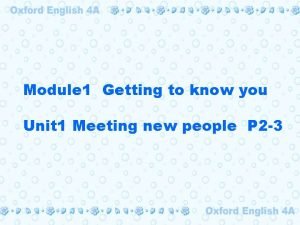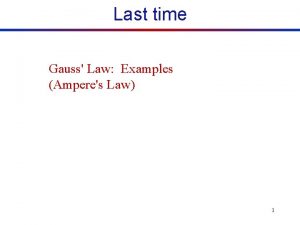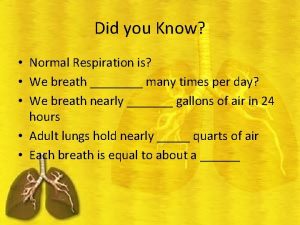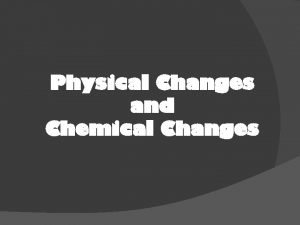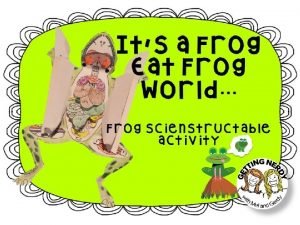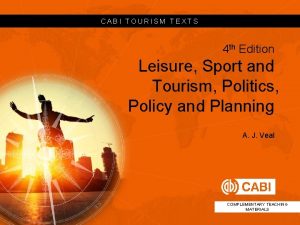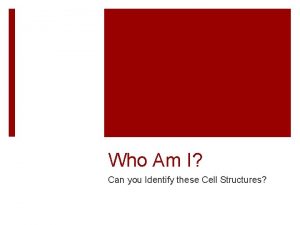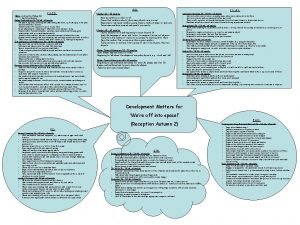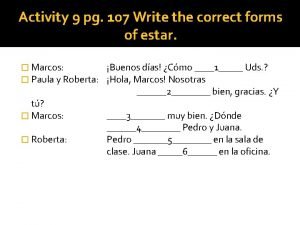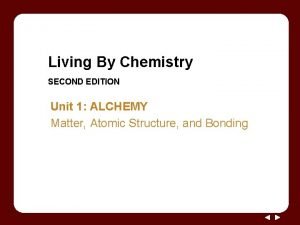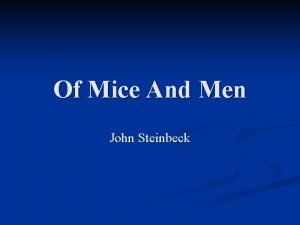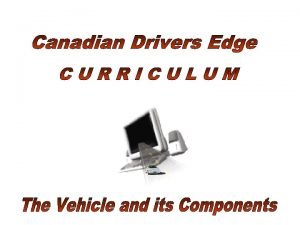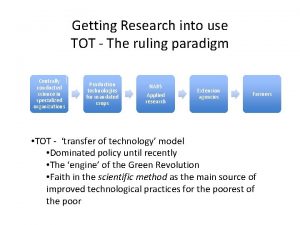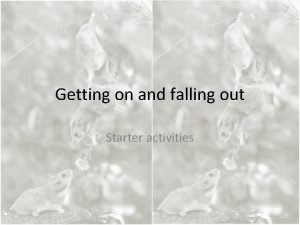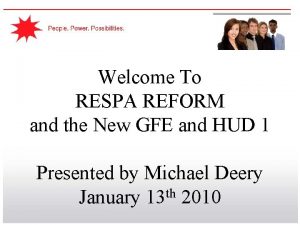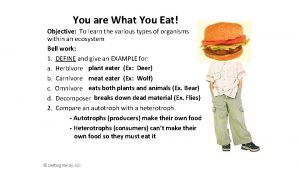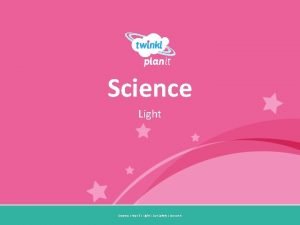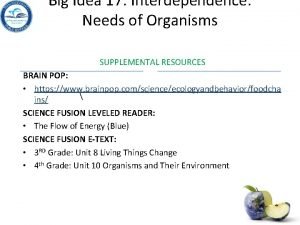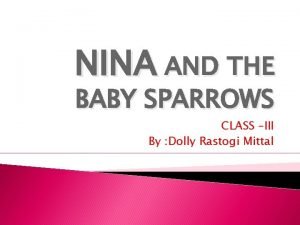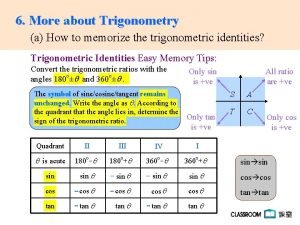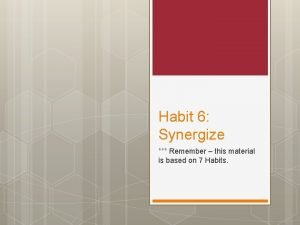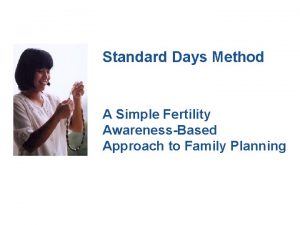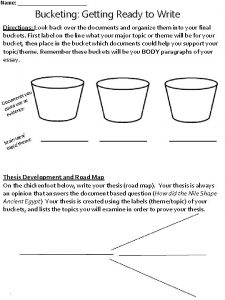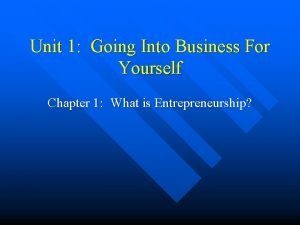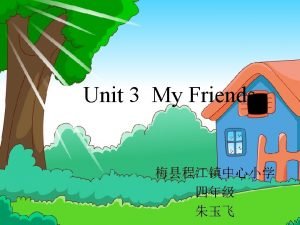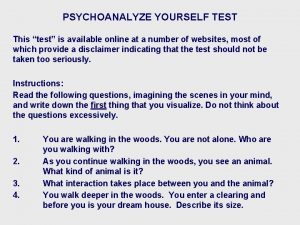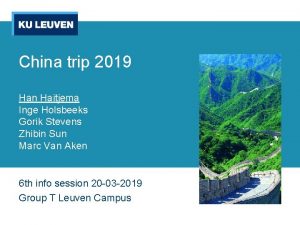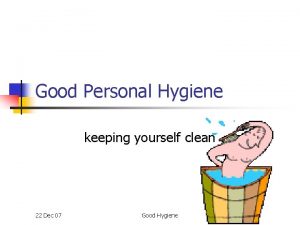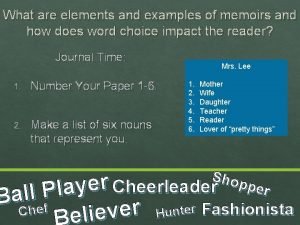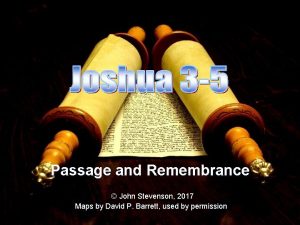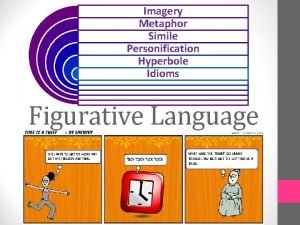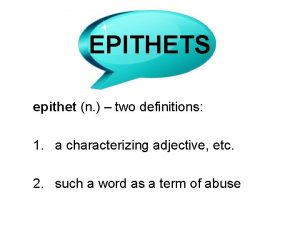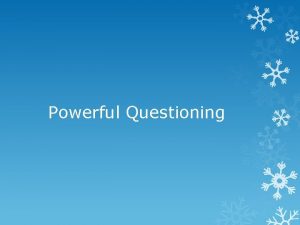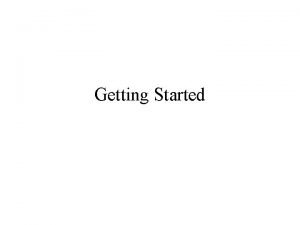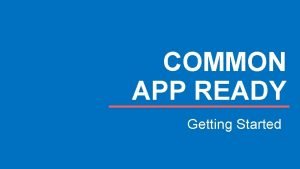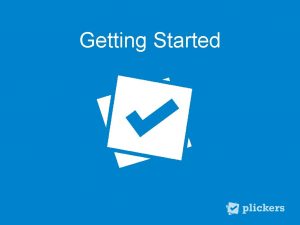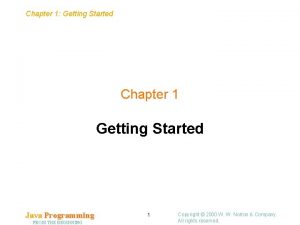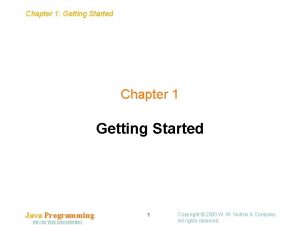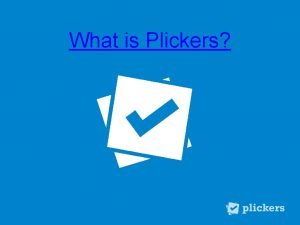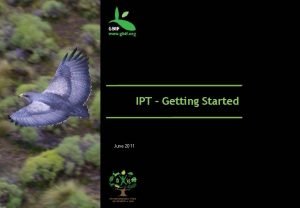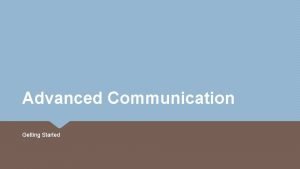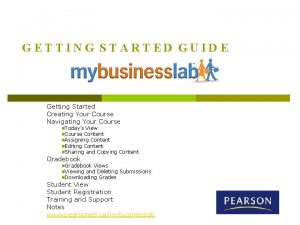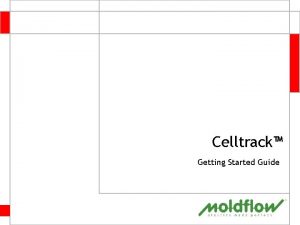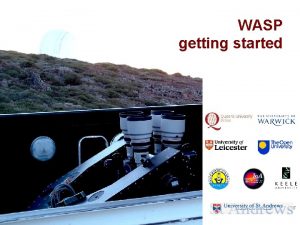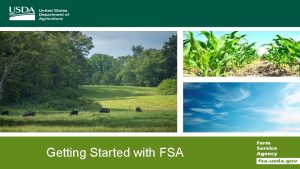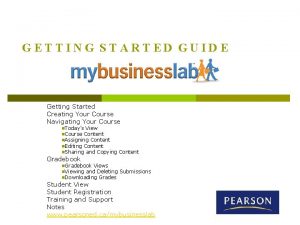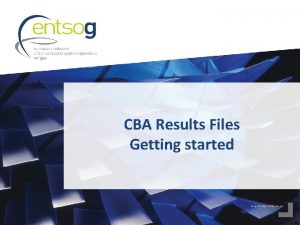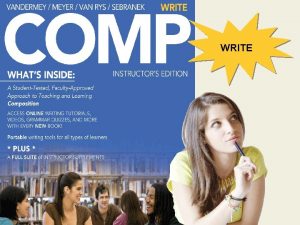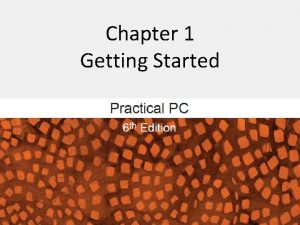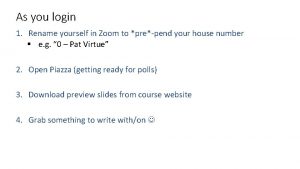Texas Last Updated 8182021 Getting Started Rename yourself




























































































































































- Slides: 156

Texas Last Updated: 8/18/2021

Getting Started… Rename yourself in Zoom to include your region Open a web browser. Split your screen so your web browser fills half the screen and Zoom fills the other half. If you have 2 screens, open Zoom on one screen and a web browser on the other. *insert Nearpod link* 2

Google Folder Materials *insert screenshot and guidance on how to access materials* 3

About you… In the Nearpod, please: • Share a time when you (or your students or children) demonstrated growth 4

Objectives Participants will: • Understand how the SLO process can be used as a valid and reliable measure of student growth • Review all 3 phases of the SLO process through the student growth lens • Practice writing and editing all steps in the SLO process 5

Framing questions ●How do we know if students are growing in their knowledge and skills? ●What evidence will we use to determine students’ beginning skill level, the progress they make throughout the year, and determine their end of year skill level? 6

The SLO Process • Highly structured • Multiple data sources for all Three Phases of SLO process • Student work as evidence • An alternate student growth measure, based on body of evidence of student work, instead of a pretest/post-test • Appraiser approval of all Three Phases of SLO is critical (which means appraiser training is critical) 7

Student Growth: Using Tests vs. Using a Body of Evidence of Student Work (SLOs) SLOs ●Based on a foundational skill ●Based on a body of evidence of student work aligned to the skill ●Student work from throughout the school year ●Multiple data points Pre-test/Post-test ●Typically based on larger scope of material ●Based on how students perform on a test, not on student work ●Comparison of beginning and end of year tests ●Two data points 8

Connection to Teacher Growth • Reflective process • On which assignments did students demonstrate the most growth? • How might this reflect instructional practices being used? • How did differentiated student supports align with demonstrated student growth? • Using evidence, reflection and coaching to make necessary instructional pivots 9

Highly Structured Process Level of detail in SLO Skill Statement Evidence based Initial Skill Profile Evidence used to map students to ISP Evidence used to set Targeted Growth Goals for each student • All of the above approved by trained appraisers • BOY, MOY, and EOY Conferences • Body of Evidence used at EOY to determine each student’s EOY Skill level • • 10

Body of Evidence • What constitutes a valid Body of Evidence? • How aligned is each piece of evidence to the Skill Statement? • How will the Body of Evidence be tracked? • Student work samples (which can include but should not be limited to tests) that measure the skill named in the SLO Skill Statement • High degree of alignment 11

Core Idea The Student Learning Objective process is an evidenced based measure of student growth 12

Growth vs. Achievement Advanced Proficient Start of the School Year End of the School Year 13

Pre-set grade level expectations for all Student Growth Measures 14

The SLO Perspective The goal of a teacher is to maximize the potential of every student in the classroom. Student growth is the best indicator of whether teachers are reaching that goal. 15

Core Idea – 2 To maximize growth, first we must know specifically which skills students do or do not have at the beginning of the year 16

SLOs are… ●An accurate, evidence-based process to measure student growth ●A concentrated look at instructional impact on student learning ●Focused on a foundational skill of the course ●Evidence-based ●A means to teacher growth ( via focus on student growth: reflect, assess, adjust and develop over time) 17

Six Big Questions of the SLO Process How will I guide these students towards growth? Who are my students? What is the focus of my SLO? Did students grow and what did I learn from this process? Are students progressing towards these targets? What are my expectations for these students? 18

Six Big Questions of the SLO Process – 2 What is the focus of my SLO? What are my expectations for these students? Who are my students? Are students progressing towards these targets? How will I guide these students towards growth? Did students grow and what did I learn from this process? 19

Why isn’t “Who are my students? ” first? • This isn’t about sorting the questions for order of importance, it’s about sequencing so that we maximize student growth. • We can’t determine where are students are with respect to a foundational skill, without determining what the foundational skill is first. 20

Structure of the training • Model/Activity/Your Turn • • Key ideas Success Criteria Exemplars/Non-exemplars Practice creating your own • Core Ideas • Key Takeaways • Flexibility and Questions 21

What we will cover… 1. 2. 3. 4. 5. 6. 7. 8. Writing Quality SLO Skill Statements Writing Quality Initial Skill Profiles Matching Students to the ISP Writing Quality Targeted Skill Profiles Revised SLO Form Collecting a Valid Body of Evidence Revised Student Growth Tracker Determining EOY Skill Levels Based on Body of Evidence 22

What makes a strong Skill Statement 23

What is the focus of my SLO? 24

SLO Skill Statement The skill statement is a description of what students should be able to do with respect to the foundational skill by the end of the course/year. 25

Creating Skill Statements Essential Question: What are the most important skills I teach? • Emphasizes priority of content; needs to be aligned to standards for the course, and reinforce foundational skills • TEKS used as a guide, but won’t cover all of them • Teacher can provide clear explanation of the importance of the selected content for the SLO • Needs to include a representative group of students 26

Success Criteria for Writing an Effective Skill Statement 1. Represents a foundational skill that is specific to the content area 2. Persists throughout the course 3. Measurable through a demonstration of student skill 4. Focus on it will lead to student and teacher growth in this course and beyond 5. The skills captured are clearly defined and appropriately focused 27

SLO Skill Statements – 2 Non-Example Students will analyze the Civil War Analyze multiple pieces of evidence, including primary documents, to make claims and justify conclusions 28

SLO Skill Statements – 3 Success Criteria 1. 2. 3. 4. 5. Represents a foundational skill that is specific to the content area Persists throughout the course Measurable through a demonstration of student skill Focus on it will lead to student growth in this course and beyond The skills captured are clearly defined and appropriately focused Example Analyze multiple pieces of evidence, including primary documents, to make claims and justify conclusions 29

SLO Skill Statements – 4 Non-Example Students use drawing techniques to complete projects Example Use conventions of shading (light and dark) to convey perspective in a pencil/pen sketch 30

SLO Skill Statements – 5 Success Criteria 1. 2. 3. 4. 5. Represents a foundational skill that is specific to the content area Persists throughout the course Measurable through a demonstration of student skill Focus on it will lead to student growth in this course and beyond The skills captured are clearly defined and appropriately focused Example Use conventions of shading (light and dark) to convey perspective in a pencil/pen sketch 31

SLO Skill Statement Non-Exemplars ●Individually (silent/solo) read your assigned Non- Exemplar Skill Statements from each of the three groups of statements (5 minutes) ●Be prepared to discuss in breakout rooms: (5 minutes) ●What do you notice? ●Where are the gaps in order to align to the Success Criteria? ●What advice would you give your colleague in order to strengthen these Skill Statements? 32

Strengthening Non-Exemplar Skill Statements ●Use Success Criteria as a guide ●Determine where the gap is ●Add in what is missing ●Use the TEKS to ensure Skill Statement reflects foundational skill 33

TEKS Connection § 130. 254. Culinary Arts (Two Credits), Adopted 2015. (a) General requirements. This course is recommended for students in Grades 10 -12. Recommended prerequisites: Principles of Hospitality and Tourism and Introduction to Culinary Arts. Students shall be awarded two credits for successful completion. 8) The student evaluates and determines equipment, ingredients, and procedures used in a professional food setting. The student is expected to: (A) identify and demonstrate the role of mise en place in professional food service (B) identify and use large and small equipment in a commercial kitchen; (C) develop and practice food production and presentation techniques; (D) identify and use the appropriate application of moist, dry, and combination cookery methods; (E) demonstrate the preparation skills of items commonly prepared in food service operations such as breakfast cookery, salads and dressings, soups and sandwiches, stocks and sauces, appetizers, seafood, poultry, meat, pastas and grains, and fruits and vegetables; (F) demonstrate baking techniques such as yeast breads and rolls, quick breads, and desserts. 34

TEKS Connection – 2 35

Consult the TEKS as a general guide • Still about a foundational skill of the course • The most important “bits” of the course • SLOs are not about all of the TEKS, rather about the most enduring aspects. 36

Core Idea – 3 To produce the greatest depth of learning, the most effective teachers prioritize their time around the foundational knowledge and skills; they don’t chase TEKS. 37

Strengthening Skill Statements Before Culinary Arts 101 - Students will use proper cooking conditions and follow recipes to prepare nutritionally sound meals After Students will be able to plan and prepare a nutritionally sound meal, applying industry standard cooking techniques and using American Culinary Federation Education Standards for sanitation and safety 38

Strengthening Skill Statements Before: 3 rd Grade Math Students will summarize data with multiple categories using a frequency table, dot plot, pictograph, and bar graph with scale intervals. They will also solve one and two step problems using categorical data represented with a frequency table, dot plot, pictograph, or bar graph with scaled intervals. – 2 After Students will be able to recall basic multiplication and division facts with fluency and accuracy and apply their understanding of multiplication and division to solve one and two-step word problems. 39

Activity • In breakout rooms, select one of the three nonexemplar skill statements you reviewed previously • As a group, strengthen it by filling in identified gaps to align with the Success Criteria • Be prepared to share your Before/After in Nearpod when we come back and talk us through your revised Skill Statement 40

A Resource to review (and use later!) • You can find the full list of revised Skill Statements in the Google drive, and also in the chat. Take a few minutes to review. • What do you notice about the revised skill statements compared to their original nonexemplar format? 41

Use the blank SLO Form on in your Folder to record your Skill Statement 42

Your Turn! 43

Logistics - Year One 44

Logistics - Years Two and Beyond 45

Reflections What are your key takeaways from this section of the SLO? 46

What makes a strong Initial Skill Profile 47

Core Idea – 4 The most effective teachers teach the students they have, not the students they think they’ll have. 48

Step Two 49

Who are my students? There are two different parts in this section: a. What do I expect my students will be able to do with this skill statement, based on what is typical in my experience? b. What are my students actually able to do, based on multiple data points? 50

Creating an Initial Skill Profile • A skill progression rubric • Describes different levels of student proficiency with respect to the foundational skill • Begin with what a student “typically” knows and can do when they walk in the door at the beginning of the year (with respect to the skill selected for the SLO) 51

Success Criteria for Writing an Effective Initial Skill Profile 1. 2. 3. 4. 5. Articulates skills for the beginning of the year Differentiates between levels Descriptors align to skill statement Can be assessed in multiple ways Based on multiple sources of evidence/a teacher’s experience 52

Initial Skill Profile: Exemplar Level Descriptors Students can summarize the most significant information with Well informational texts, consistently make accurate inferences, and can above often connect inferences with appropriate textual evidence, although typical written explanation of evidence is often weak or underdeveloped. skill Students can summarize the most significant information with Above informational texts and often make accurate inferences, although they typical struggle to connect inferences with appropriate textual evidence. skill Typical Students can comprehend informational texts with consistent skill success summarizing the most significant information, although students often fail to make accurate inferences. 53

Initial Skill Profile: Exemplar – 2 Level Descriptors Typical Students can comprehend informational texts with consistent skill success summarizing the most significant information, although students often fail to make accurate inferences. Below Students can comprehend informational texts but struggle to typical summarize the most significant information. skill Well Students struggle to comprehend informational texts and are below generally unable to summarize the most significant typical information. skill 54

Initial Skill Profile Skill Statement 8 th ELA: Students will be able to draw accurate conclusions supported by appropriate textual evidence from informational texts Success Criteria of an ISP Articulates skills for the beginning of the year Differentiates between levels Descriptors align to skill statement (potentially through subskills) Can be assessed in multiple ways Based on multiple sources of evidence/a teacher’s experience Partial ISP Skill Descriptors Students can summarize the most Above significant information with typical informational texts and often make Skill accurate inferences, although they struggle to connect inferences with appropriate textual evidence. Typical Skill Students can comprehend informational texts with consistent success summarizing the most significant information, although students often fail to make accurate inferences. 55

Initial Skill Profile – 2 Skill Statement 8 th ELA: Students will be able to draw accurate conclusions supported by appropriate textual evidence from informational texts Success Criteria of an ISP Articulates skills for the beginning of the year Differentiates between levels Descriptors align to skill statement (potentially through subskills) Can be assessed in multiple ways Based on multiple sources of evidence/a teacher’s experience Partial ISP Skill Descriptors Students can summarize the most Above significant information with typical informational texts and often make Skill accurate inferences, although they struggle to connect inferences with appropriate textual evidence. Typical Skill Students can comprehend informational texts with consistent success summarizing the most significant information, although students often fail to make accurate inferences. 56

Initial Skill Profile Exemplar Skill Statement Culinary Arts I: Students will be able to plan and prepare food commonly served in food service operations, (aligned to USDA standards) applying industry standard cooking techniques and using American Culinary Federation Education Standards for sanitation and safety. Level Descriptors Well above Students have considerable experience with cooking and report often typical skill helping to cook the family meals, including cooking some dishes independently. Students are familiar with cooking techniques and safety standards. Above Students have cooked one or two dishes independently and sometime typical skill assist in cooking family meals. Students are aware of some cooking techniques and safety standards Typical Students have some cooking experience, typically assisting family skill members as they prepare meals, but have not cooked independently. Students with prompting can recognize basic cooking techniques and safety standards. 57

Initial Skill Profile – 3 Skill Statement Culinary Arts I: Students will be able to plan and prepare food commonly served in food service operations, (aligned to USDA standards) applying industry standard cooking techniques and using American Culinary Federation Education Standards for sanitation and safety. Level Descriptors Typical Students have some cooking experience, typically assisting family members as they prepare meals, but have not cooked independently. skill Students with prompting can recognize basic cooking techniques and safety standards. Below Students have a little cooking experience, typically with prepared Typical foods/cake mixes/refrigerated cookie dough, etc. Students are not skill aware of most basic cooking techniques but recognize some basic safety standards. Well Below Students have no cooking experience and are not aware of basic Typical cooking techniques or safety standards. skill 58

Initial Skill Profile – 4 Skill Statement Culinary Arts I: Students will be able to plan and prepare food commonly served in food service operations, (aligned to USDA standards) applying industry standard cooking techniques and using American Culinary Federation Education Standards for sanitation and safety Partial ISP Success Criteria of an ISP Articulates skills for the beginning of the year Differentiates between levels Descriptors align to skill statement Can be assessed in multiple ways Based on multiple sources of evidence/a teacher’s experience Students have some cooking Typical experience, typically assisting family Skill members as they prepare meals, but have not cooked independently. Students with prompting can recognize basic cooking techniques and some safety standards Below Students have a little cooking Typical experience, typically with prepared Skill foods/cake mixes/refrigerated cookie dough, etc. Students are not aware of most basic cooking techniques or safety standards. 59

Initial Skill Profile – 5 Skill Statement Culinary Arts I: Students will be able to plan and prepare food commonly served in food service operations, (aligned to USDA standards) applying industry standard cooking techniques and using American Culinary Federation Education Standards for sanitation and safety Partial ISP Success Criteria of an ISP Articulates skills for the beginning of the year Differentiates between levels Descriptors align to skill statement (potentially through subskills) Can be assessed in multiple ways Based on multiple sources of evidence/a teacher’s experience Students have some cooking Typical experience, typically assisting family Skill members as they prepare meals, but have not cooked independently. Students with prompting can recognize basic cooking techniques and some safety standards Below Students have a little cooking Typical experience, typically with prepared Skill foods/cake mixes/refrigerated cookie dough, etc. Students are not aware of most basic cooking techniques or safety standards. 60

Initial Skill Profile Non-Exemplars ●Individually (silent/solo) read your assigned Non- Exemplar ISP. ●Be prepared to discuss in breakout rooms: ●What do you notice? ●Where are the gaps in order to align to the Success Criteria? ●What advice would you give your colleague in order to strengthen these ISPs? 61

Revising a non-exemplar ISP: 3 rd Grade Math 1. Where are the gaps? 2. How can you align better to the skill statement? 3. How can you make it clearly measurable? 62

One Example: Revised 3 rd Grade Math ISP Skill Statement: Students will be able to recall basic multiplication and division facts with fluency and accuracy and apply their understanding of multiplication and division to solve one and two-step word problems. Level Descriptors Well Above Student can multiply independently but are not able to use multiplication Typical Skill skills to solve one or two step word problems. Above Students can add and subtract four-digit numbers with accuracy and multiply Typical Skill some numbers independently, without support Typical skill Students can add and subtract four-digit numbers with accuracy and multiply some numbers when given support like manipulatives. Below Students can add and subtract four-digit numbers with difficulty and often Typical Skill without accuracy. Students understand groupings of numbers but cannot multiply numbers. Well Below Students can add four-digit numbers but struggle with subtraction and Typical Skill regrouping. 63

Changes from non-exemplar to revised version Revised Version • Descriptors for each level align to the skill statement • Mentions specific tasks • Measurable • Each level specifies increasing level of measurable skill • Progress from each level to the next makes sense 64

A Resource to Review (and use later!) – 2 • You can find the full list of revised ISPs in the folder. Take a few minutes to review. • What do you notice about the revised ISPs compared to their original non-exemplar format? 65

66

Your Turn! – 2 • On your own and using the SLO Skill statement you wrote this morning, create an Initial Skill Profile. Record on the SLO Form in your Folder • You will have 15 minutes • Hint: Use the TEKS! TEKS main site • Hint: Use the Success Criteria • We will select a few from your folders to share • You will use the ISP you create for during the next part of the training 67

Success Criteria for Writing an Effective Initial Skill Profile – 2 1. 2. 3. 4. 5. Articulates skills for the beginning of the year Differentiates between levels Descriptors align to skill statement Can be assessed in multiple ways Based on multiple sources of evidence/a teacher’s experience 68

Reflections – 2 What are your key takeaways from this section on writing a quality Initial Skill Profile 69

How do you determine which students fall into which entering skill levels? 70

Who are my students? – 2 There are two different parts in this section: a. What do I expect my students will be able to do with this skill statement, based on what is typical in my experience? b. What are my students actually able to do, based on multiple data points? 71

Who are my students? – 3 We collect data about our current students’ skill level in order to assess current level of learning and map to the Initial Skill Profile. 72

Who are my students? – 4 Timeline for writing ISP and collecting skill level data Year 1 Year 2 and Beyond First 6 - 9 weeks* First 4 -6 weeks *Depending on date of teacher SLO orientation 73

Students’ Entering Skill Levels ● Match Students to the ISP • • Where are students in relation to the Skill Statement? Use multiple sources of data to determine each student’s entering skill level. Use current and historical data To which skill level descriptor on the ISP does each student’s entering skill level most closely correspond? 74

Core Idea – 5 The most effective teachers teach the students they have, not the students they think they’ll have. 75

Who are my students? – 5 8 th Grade ELA Skill Statement: Students will be able to draw accurate conclusions supported by appropriate textual evidence from informational texts. ●The teacher gave five types of assessments to capture her students’ BOY skill levels ●Each type was scored on five-point scale ●Measures included (with grade-level informational texts): ●Multiple choice passages (comprehend ) ●Response to a prompt (summarize) ●Short answers (comprehend, textual evidence) ●Analysis essay (inferencing, textual evidence) ●Free Write (connect inferences to textual evidence) 76

What are my students’ BOY skill levels? 77

What are my students’ BOY skill levels? – 2 78

Who are my students? – 6 • Use a preponderance of evidence when placing students • Just because they are placed in the same level doesn’t mean they have the same exact skill set • Accuracy versus precision 79

Activity – 2 • Use the 3 rd grade math ISP student work samples document and the 3 rd grade Math ISP in your Participant Manual • Using the student work, map the students’ BOY skill levels to the ISP based on the skills their work demonstrates Note: In reality there would be MULTIPLE data sources used, but for today, we are just going to use one sample per student, just to get some practice. 80

Use the student work to place students 81

Where would you place the students? 3 rd Grade Math Students’ ISP Levels 82

Where did you place the students? 3 rd Grade Math Students’ ISP Levels 83

84

Share Your Learning 85

Share Your Learning – 2 What is the purpose of the ISP? To make evidence-based decisions about students’ entering skill levels How can having baseline information about student skill levels assist teachers to support student growth? Knowing student skill levels, how they apply skills as well as how they approach tasks are keys to effective instructional planning 86

Reflections – 3 What are your key takeaways from this section on mapping students to the ISP? 87

Google Folder Materials *Insert guidance/screenshot on how to access folder of materials* 88

Based on multiple data points, what growth goals do I want to set for my students? 89

90

Targeted Skill Profiles ●The Initial Skill Profile captures students as they arrive in your class prior to your instruction. ●The Targeted Skill Profile describes what you expect of students at the end of the SLO. ●They are NOT the same. 91

Targeted Skill Profiles – 2 The Targeted Skill Profile captures the skill levels of where you think your students will be at the end of the year. Targeted Skill Profiles (TSP): ●Are a means for considering long term goals for students ●Are based on the distribution of skills seen in the students that you have in the class ●Describe what skill level your students should display at the end of the course 92

Core Idea – 6 Classroom and campus cultures that make some of the biggest gains in student growth do so by moving their focus from “what was taught” to “what was learned. ” 93

Success Criteria for Writing an Effective Targeted Skill Profile 1. 2. 3. 4. 5. Articulates skills for the end of the year Differentiates between levels Descriptors align to skill statement Can be assessed in multiple ways Targets are specific to the students in the teacher’s class and based on multiple sources of evidence 6. Reflects high, yet reasonable expectations for student growth 94

Targeted Skill Profile: Exemplar 8 th Grade ELA Skill Statement: Students will be able to draw accurate conclusions supported by appropriate textual evidence from informational texts Well Above Typical Students can draw accurate conclusions from above grade-level informational Skill texts and support conclusions with optimal evidence that deepens conclusions. Above Students can draw accurate conclusions from above grade-level informational Typical texts and support conclusions with appropriate although not always optimal Skill evidence. Typical Students can draw accurate conclusions from grade level informational texts Skill and support conclusions with appropriate although not always optimal evidence. Below Students can draw accurate conclusions most of the time from grade-level Typical informational texts and attempt to support conclusions with textual Skill evidence, but the evidence isn’t always appropriate. Well Below Students can draw accurate conclusions some of the time from grade-level Typical informational texts, but don’t attempt to support conclusions or, when Skill prompted, support conclusions with inappropriate evidence. 95

Targeted Skill Profile Skill Statement 8 th ELA: Students will be able to draw accurate conclusions supported by appropriate textual evidence from informational texts Success Criteria of a TSP Articulates skills for the end of the year Differentiates between levels Descriptors align to skill statement Can be assessed in multiple ways Targets are specific to the students in the teacher’s class and based on multiple sources of evidence Reflects high, yet reasonable expectations for student growth Partial TSP Skill Descriptors Students can draw accurate Above conclusions from above grade-level Typical informational texts and support Skill conclusions with appropriate although not always optimal evidence. Typical Skill Students can draw accurate conclusions from grade level informational texts and support conclusions with appropriate although not always optimal evidence. 96

Targeted Skill Profile – 2 Skill Statement 8 th ELA: Students will be able to draw accurate conclusions supported by appropriate textual evidence from informational texts Success Criteria of a TSP Articulates skills for the end of the year Differentiates between levels Descriptors align to skill statement Can be assessed in multiple ways Targets are specific to the students in the teacher’s class and based on multiple sources of evidence Reflects high, yet reasonable expectations for student growth Partial TSP Skill Descriptors Students can draw accurate Above conclusions from above grade-level Typical informational texts and support Skill conclusions with appropriate although not always optimal evidence. Typical Skill Students can draw accurate conclusions from grade level informational texts and support conclusions with appropriate although not always optimal evidence. 97

Targeted Skill Profile – 3 Skill Statement 8 th ELA: Students will be able to draw accurate conclusions supported by appropriate textual evidence from informational texts Success Criteria of a TSP Articulates skills for the end of the year Differentiates between levels Descriptors align to skill statement Can be assessed in multiple ways Targets are specific to the students in the teacher’s class and based on multiple sources of evidence Reflects high, yet reasonable expectations for student growth Partial TSP Skill Descriptors Students can draw accurate Below conclusions most of the time from Typical grade-level informational texts and Skill attempt to support conclusions with textual evidence, but the evidence isn’t always appropriate. Well Below Typical Skill Students can draw accurate conclusions some of the time from grade-level informational texts, but don’t attempt to support conclusions or, when prompted, support conclusions with inappropriate evidence. 98

Targeted Skill Profile – 4 Skill Statement 8 th ELA: Students will be able to draw accurate conclusions supported by appropriate textual evidence from informational texts Success Criteria of a TSP Articulates skills for the end of the year Differentiates between levels Descriptors align to skill statement Can be assessed in multiple ways Targets are specific to the students in the teacher’s class and based on multiple sources of evidence Reflects high, yet reasonable expectations for student growth Partial TSP Skill Descriptors Students can draw accurate Below conclusions most of the time from Typical grade-level informational texts and Skill attempt to support conclusions with textual evidence, but the evidence isn’t always appropriate. Well Below Typical Skill Students can draw accurate conclusions some of the time from grade-level informational texts, but don’t attempt to support conclusions or, when prompted, support conclusions with inappropriate evidence. 99

TSP Compared to ISP Above Typical Skill Students can summarize the most significant information with grade level informational texts and often make accurate inferences, although they struggle to connect inferences with appropriate textual evidence. Students can draw accurate conclusions from above gradelevel informational texts and support conclusions with appropriate although not always optimal evidence. Typical Skill Students can comprehend grade level informational texts with consistent success summarizing the most significant information, although students often fail to make accurate inferences. Typical Skill Students can make accurate inferences and draw accurate conclusions from grade level informational texts and support conclusions with appropriate although not always optimal evidence 100

TSP Compared to ISP – 2 Below Typical Skill Students can comprehend grade level informational texts but struggle to summarize the most significant information. Students can draw accurate conclusions most of the time from grade-level informational texts and attempt to support conclusions with textual evidence, but the evidence isn’t always appropriate. Well Below Typical Skill Students struggle to comprehend grade level informational texts and are generally unable to summarize the most significant information. Well Below Typical Skill Students can draw accurate conclusions some of the time from grade-level informational texts, but don’t attempt to support conclusions or, when prompted, support conclusions with inappropriate evidence. 101

TSP Exemplar: 5 th Grade Science On your own, read the 5 th Grade TSP Exemplar on p. 24 of Participant Manual • What do you notice? • How does it align to the Success Criteria for TSPs? • Jot down your answers to these questions (5 minutes), and then we will open breakout rooms to discuss 102

Success Criteria for Writing an Effective Targeted Skill Profile – 2 1. 2. 3. 4. 5. Articulates skills for the end of the year Differentiates between levels Descriptors align to skill statement Can be assessed in multiple ways Targets are specific to the students in the teacher’s class and based on multiple sources of evidence 6. Reflects high, yet reasonable expectations for student growth 103

Targeted Skill Profiles: Non. Exemplars 104

Revising TSP Descriptors SLO Skill Statement: Students will be able to apply comprehension of French I vocabulary and structures in order to converse in a culturally appropriate way about everyday topics such as greetings, food, family, etc. Before After Typical On the final exam, students Typical respond to the majority of written and oral questions about culture (presented in French) with French 1 vocabulary words and largely appropriate grammatical structure, including proper use of the present, past and future tenses. Sentences are brief. Oral responses are grammatically correct but diction and inflection are weak. Students can participate in spoken conversations in French on a variety of familiar topics. Students can ask and answer questions in basic French using French I vocabulary and structures with minimal errors. 105

Revising TSP Descriptors – 2 SLO Skill Statement: Students will be able to apply comprehension of French I vocabulary and structures in order to converse in a culturally appropriate way about everyday topics such as greetings, food, family, etc. Before Above On the final exam, students respond to typical most written and oral questions about culture (presented in French) with French 1 vocabulary words and appropriate grammatical structure, including proper use of the present, past and future tenses. Few errors are seen in grammatical structure and tense usage, uses complex sentences in responses. A few errors in diction and inflection occur in oral responses. After Above Students can interact and typical respond to conversations in French on a variety of familiar topics. Students can ask and answer questions in basic French using French I vocabulary and structures as well as respond to questions on a variety of familiar topics. 106

Steps to Revising TSPs 1. Start with the Skill Statement! (Do the skill descriptors align to the Skill Statement? ) 2. Is it clear that there will be multiple sources of evidence to determine end of year skill levels? 3. Is there enough range between the five skill levels? 4. Do all of the end of year skill descriptors represent significant growth compared to the beginning of the year skill descriptors? 107

Activity – 3 • On your own, select any non-exemplar TSP on p. 1821 • Prepare and share 108

One Example: Revised Culinary Arts TSP Skill Statement: Students will be able to plan and prepare food commonly served in food service operations, aligned to USDA Standards, applying industry standard cooking techniques and using ACFE Standards for sanitation and safety. Well above typical Students can combine individual items commonly prepared in food service operations to plan and prepare all courses of a meal, using recipes as a guide and adding additional appropriate ingredients or seasonings as appropriate. Student uses equipment and techniques found in professional food settings. Students consistently appropriate sanitation safety standards. Above typical Students can combine individual items commonly prepared in food service operations to plan and prepare all courses of a meal accurately following recipes, using equipment and techniques found in professional food settings. Students consistently appropriate sanitation and safety standards. Student able to plan and prepare individual items commonly prepared in food service operations such as breakfast items, salads and dressings, soups and sandwiches, stocks and sauces, meats, vegetables, breads, rolls, and desserts. Students use a variety of cooking techniques and comply with all sanitation and safety standards. Student able to plan and prepare individual items commonly prepared in food service, but not consistently. Students use basic cooking techniques consistently and more advanced cooking techniques inconsistently. Students comply with all sanitation and safety standards. Typical Below typical Well Below Student able to plan and prepare some individual times commonly prepared in food service but Typical not all and/or not consistently. Student uses basic cooking techniques most of the time, but struggles with sequencing of steps for some techniques. Student generally complies with sanitation and safety standards, but still demonstrates some practices that are out of 109 compliance some of the time.

A Resource to Review (and use later!) – 3 • You can find the full list of revised TSPs in the folder, and also in the chat. 110

Your Turn! – 3 111

Success Criteria for Writing an Effective Targeted Skill Profile – 3 1. 2. 3. 4. 5. Articulates skills for the end of the year Differentiates between levels Descriptors align to skill statement Can be assessed in multiple ways Targets are specific to the students in the teacher’s class and based on multiple sources of evidence 6. Reflects high, yet reasonable expectations for student growth 112

Setting Targeted Growth Goals What are my expectations for my students? • Teachers set an individual targeted growth goal, using multiple data points for each student • • • Current class work/projects/tests& quizzes Historical data Attendance Grades in other related classes Test histories (where relevant) 113

Targeted Skill Profile: Exemplar – 2 8 th Grade ELA Skill Statement: Students will be able to draw accurate conclusions supported by appropriate textual evidence from informational texts Well Above Typical Students can draw accurate conclusions from above grade-level informational Skill texts and support conclusions with optimal evidence that deepens conclusions. Above Students can draw accurate conclusions from above grade-level informational Typical texts and support conclusions with appropriate although not always optimal Skill evidence. Typical Students can draw accurate conclusions from grade level informational texts Skill and support conclusions with appropriate although not always optimal evidence. Below Students can draw accurate conclusions most of the time from grade-level Typical informational texts and attempt to support conclusions with textual Skill evidence, but the evidence isn’t always appropriate. Well Below Students can draw accurate conclusions some of the time from grade-level Typical informational texts, but don’t attempt to support conclusions or, when Skill prompted, support conclusions with inappropriate evidence. 114

What are my expectations for these students? – 2 115

What are my expectations for these students? – 3 116

What are my expectations for these students? – 4 117

What are my expectations for these students? – 5 118

What are my expectations for these students? – 6 119

Below typical skill 120

Reflections – 4 What are your key takeaways from this section on writing a quality Targeted Skill Profile and setting specific, data-based growth goals for each student? 121

Step 4: Differentiation, Progress Monitoring, Colleague Collaboration 12 2

SLO Form: Step 4 ●Differentiation ●Progress Monitoring ●Colleague Collaboration 123

Differentiation How will you differentiate instruction for those students who are in the highest performing group as well as those who are in the lowest performing group? How will you guide all students toward reaching their targeted growth goals? Example: 8 th Grade ELA • Reading supports for informational texts • Supplemental texts to build prior knowledge • Hold bi-weekly writing conferences • Refer to rubrics • Hold goal–setting conversations with students • Have students' complete individual trackers • Peer Tutoring a. 124

Progress Monitoring b. What strategies will you use to monitor progress? How will you document your body of evidence for each student? • Complete Student Growth Tracker after each piece of evidence is completed and scored • Strategic/Aggressive Monitoring – Monitoring student work in class to close gaps during instruction (laps!) • Hold bi-weekly writing conferences with individual students (groups of students working on the same writing skill) • Frequently revisit writing rubrics with students • Students share work in common folder • Data Meeting/Conferences 125

Colleague Collaboration c. Describe your plan for conferencing with your colleagues about student progress. Who will be members of your team and how often will you meet? • The writing teachers will meet bi-weekly in our after-school PLCs to share student work samples to calibrate scoring. • Discuss and share plans for differentiation based on student data. • Discuss non-academic struggles and success 126

Your Turn! – 4 1. Individually (silent solo) 2. 10 minutes 3. SLO Form 4. Complete Step 4 using your Skill Statement, ISP, and TSP 127

Reflection ● How did you answer Step 4? ● With which portion of Step 4 do you believe you will need the most support? 128

Three Phase Process 129

What student work will you use to track student progress and ultimately determine EOY skill levels? 13 0

Phase Two: Monitor Progress and Build the Body of Evidence (BOE) Q: How do I assess student progress for my SLO? A: With a robust Body of Evidence 131

How will I guide these students towards growth? 132

Body of Evidence – 2 • Define what counts as a quality task/assessment/project in order to be considered part of the BOE • Set minimum number of data points to be included in the BOE, minimum five pieces of student work/evidence per student • Require BOE check-ins at least twice a year with teacher and appraiser 133

Body of Evidence – 3 SLO Skill Statement: Students will be able to draw accurate conclusions supported by appropriate textual evidence from informational texts Which assignments should be part of the BOE for this SLO? 134

Body of Evidence – 4 SLO Skill Statement: Students will be able to draw accurate conclusions supported by appropriate textual evidence from informational texts Which assignments should be part of the BOE for this SLO? 135

Your Turn! – 5 136

How will I track student progress/document student work for my SLO? 13 7

Student Growth Tracker – 2 138

Student Growth Tracker – 3 ●Includes: ●Initial Skill Profile Level ●Targeted Skill Profile Growth Goal ●Progress Monitoring Evidence ●End of Year Student Skill Level ●Representation of Growth ●Mastery of assignments/evidence ●Scoring 1 -5 ●Scoring % ●A-F 139

Student Growth Tracker – 4 ●A place to store data on student progress ●Numbers are a place holder for how the student work aligns to the skill descriptors on the TSP Example: Assignment #1: Adding/Subtracting with Regrouping 140

Student Growth Tracker – 5 141

Your Turn! – 6 ●Open the Excel document ●Complete the tracker for 5 sample students ●Sources of data from BOE ●Complete each column with score that reflects student skill level as it aligns to descriptors in the TSP ●Write down ●Extra questions ●Areas of greater support Remember: You are entering numbers, but they are just “stand ins” for how the student work aligns to skill descriptors on TSP. Not about the numbers as much as about the skills. 142

Success Criteria 143

Essential Question 144

Using Student work to determine end of year skill levels 14 5

Three Phase Process – 2 146

147

What are my students’ EOY Skill Levels? ●Assess the end-of-year student skill level based on the Body of Evidence ●Based on the Body of Evidence, to which skill level on the TSP does each student’s work most closely align? ●About using student work to determine the skill level on the TSP ●Did students meet their targeted EOY skill level? 148

Let’s go back to 3 rd grade math… ●Look at student work from EOY ●Based on this work, to which level on the TSP does each student’s work most closely align? 149

Where would you place the students? – 2 3 rd Grade Math Students’ ISP Levels 150

Activity – 4 • Use the 3 rd grade math student work samples and the 3 rd grade Math TSP in your Participant Manual … • Map the students’ EOY skill levels to the TSP based on the skill level shown in their student work Note: In reality there would be MULTIPLE data sources used, but for today, we are just going to use one sample per student, just to get some practice. 151

Where would you place the students? – 3 3 rd Grade Math Students’ ISP Levels 152

Where would you place the students? – 4 3 rd Grade Math Students’ ISP Levels 153

154

Did students grow and what did I learn from this process? 155

Closing ●What have you learned from a colleague today? ● What have you learned about the SLO process and how it can be used as a valid and reliable student growth measure? ●What are your next steps and how will this training help you complete them? 156
 The secret to getting ahead is getting started
The secret to getting ahead is getting started Infuecers gone wild
Infuecers gone wild Getting started with excel
Getting started with excel Unit 1 getting started
Unit 1 getting started Lesson 1 hobbies
Lesson 1 hobbies Getting started with eclipse
Getting started with eclipse Unix for bioinformatics
Unix for bioinformatics Getting started with vivado
Getting started with vivado Outlook tutorial 2010
Outlook tutorial 2010 Getting started with poll everywhere
Getting started with poll everywhere Local environment getting started
Local environment getting started Mathematica getting started
Mathematica getting started Education.splunk
Education.splunk Getting started with ft8
Getting started with ft8 Perl getting started
Perl getting started Counter code
Counter code Android development getting started
Android development getting started Find these things in unit 1
Find these things in unit 1 Rancher slack
Rancher slack Unit 2 listen and read
Unit 2 listen and read Lua getting started
Lua getting started Getting started with access
Getting started with access Getting started with vivado ip integrator
Getting started with vivado ip integrator Sample monitoring and coaching form
Sample monitoring and coaching form The symbol tsfa in alu operations include
The symbol tsfa in alu operations include Ict in education images
Ict in education images Know yourself to lead yourself
Know yourself to lead yourself Check yourself before you wreck yourself origin
Check yourself before you wreck yourself origin Yourself themselves
Yourself themselves Complete the partition and then rename
Complete the partition and then rename Higher term of 3/4
Higher term of 3/4 Rename meme
Rename meme Cffile readbinary
Cffile readbinary Rename 30 as a fraction
Rename 30 as a fraction Rename unity project
Rename unity project Ishita works as a corporate event coordinator
Ishita works as a corporate event coordinator Excited to get started
Excited to get started What was ww1 about
What was ww1 about Neuschwanstein castle map
Neuschwanstein castle map Seven ages of cinema
Seven ages of cinema Started an all-female academy in hartford, connecticut.
Started an all-female academy in hartford, connecticut. What is ra 10912
What is ra 10912 The day started
The day started When did engineering begin
When did engineering begin Jeff roark
Jeff roark The speedy fast ski resort has started to keep track
The speedy fast ski resort has started to keep track Founder herbalife
Founder herbalife Nancy started the year with $425 in the bank
Nancy started the year with $425 in the bank Where was flag football first introduced?
Where was flag football first introduced? When was globalization started
When was globalization started When labour day started
When labour day started Who was in ww1
Who was in ww1 Gina fox has started her own company
Gina fox has started her own company Suppose jan started up a small lemonade
Suppose jan started up a small lemonade Who founded samaritans purse
Who founded samaritans purse When labour day started
When labour day started 2001 khushhal
2001 khushhal Renounced corduroy
Renounced corduroy Tcs maitree initiative
Tcs maitree initiative Where did rizal started his formal schooling
Where did rizal started his formal schooling Third green revolution
Third green revolution When urdu hindi controversy emerged in subcontinent
When urdu hindi controversy emerged in subcontinent The journey has just started
The journey has just started Renaissance and rebirth
Renaissance and rebirth Paola stipo
Paola stipo Futsal history
Futsal history How to get started with soar?
How to get started with soar? Let's get started presentation
Let's get started presentation When labour day started
When labour day started Lets get started images
Lets get started images Blue cross blue shield fep vision ppo providers
Blue cross blue shield fep vision ppo providers This period lasted from approximately 1775 - 1825
This period lasted from approximately 1775 - 1825 Color tv started
Color tv started A psychologist who classifies an individual's personality
A psychologist who classifies an individual's personality When islam started
When islam started What started the renaissance
What started the renaissance Origin of jainism
Origin of jainism Ron has just started as a scrum master
Ron has just started as a scrum master Portrait of emy
Portrait of emy Why cold war started
Why cold war started Ways of getting food
Ways of getting food Routinally
Routinally 4102006
4102006 Can u have period cramps and be pregnant
Can u have period cramps and be pregnant Unit 2 getting acquainted with the vehicle answer key
Unit 2 getting acquainted with the vehicle answer key Coverdale's 'systematic approach
Coverdale's 'systematic approach Getting ready for the real world answers
Getting ready for the real world answers Getting organizational redesign right
Getting organizational redesign right Getting ready to cook
Getting ready to cook Acta ophthalmologica
Acta ophthalmologica An object
An object What is old susy’s place?
What is old susy’s place? Positive deep ring occlusion test
Positive deep ring occlusion test Chapter 5 mental and emotional problems lesson 4 answer key
Chapter 5 mental and emotional problems lesson 4 answer key Getting everyone back together safely
Getting everyone back together safely Getting a hedgehog concept is an inherently
Getting a hedgehog concept is an inherently Fur coat summary
Fur coat summary Why was the great joy in nina's house
Why was the great joy in nina's house Stay ready so you don't have to get ready
Stay ready so you don't have to get ready American researcher who involved in getting heart rate
American researcher who involved in getting heart rate Junita does not feel like getting out of bed
Junita does not feel like getting out of bed I was getting ready for sam's birthday
I was getting ready for sam's birthday Get to know questions
Get to know questions Attention seeker
Attention seeker Management getting things done through
Management getting things done through Getting ready to cook
Getting ready to cook Genetics yellow and blue make answer key
Genetics yellow and blue make answer key How are you
How are you Faraday's law
Faraday's law Oui hai
Oui hai Getting wind knocked out of you
Getting wind knocked out of you Activity 1 counting by getting the mass of an object
Activity 1 counting by getting the mass of an object Definition of physical change
Definition of physical change Human body it's a frog eat frog world
Human body it's a frog eat frog world 3.05 getting the most for your money
3.05 getting the most for your money Series of tubes found throughout the cell
Series of tubes found throughout the cell Seal getting on and falling out
Seal getting on and falling out Prayer before test exam
Prayer before test exam The verb estar page 107 answers
The verb estar page 107 answers Getting connected ionic compounds
Getting connected ionic compounds Getting
Getting What is the threat that curley's wife makes in crooks cabin
What is the threat that curley's wife makes in crooks cabin Chatbot adult
Chatbot adult Unit 2 getting acquainted with the vehicle
Unit 2 getting acquainted with the vehicle Getting tot
Getting tot Getting on and falling out
Getting on and falling out Getting it right
Getting it right Unit 2 mental and emotional health
Unit 2 mental and emotional health What is a herbivore
What is a herbivore The sandlot journey
The sandlot journey Getting from point a to point b
Getting from point a to point b Is uv getting stronger
Is uv getting stronger Big idea 17 interdependence
Big idea 17 interdependence The art of getting along
The art of getting along What did mother suggested to nina
What did mother suggested to nina The art of getting things done through people
The art of getting things done through people Getting triggy with it
Getting triggy with it Habit 6 synergy
Habit 6 synergy The standard days method
The standard days method Bucketing getting ready to write answers
Bucketing getting ready to write answers Pros and cons of marriage
Pros and cons of marriage Www.state.nj.us/mvc/licenses/ document selector/index.htm
Www.state.nj.us/mvc/licenses/ document selector/index.htm Going into business for yourself
Going into business for yourself Write the questions and the short answers in your notebook
Write the questions and the short answers in your notebook Tall+short h
Tall+short h Launch yourself
Launch yourself Psychoanalyze yourself test
Psychoanalyze yourself test Gorik yourself
Gorik yourself Conduct yourself in a responsible manner
Conduct yourself in a responsible manner Important of personal hygiene
Important of personal hygiene Memoir examples
Memoir examples Circumcise yourself
Circumcise yourself Example of poem about yourself
Example of poem about yourself Help yourself to coffee
Help yourself to coffee What would you change about yourself
What would you change about yourself Epithets
Epithets Powerful questioning
Powerful questioning


